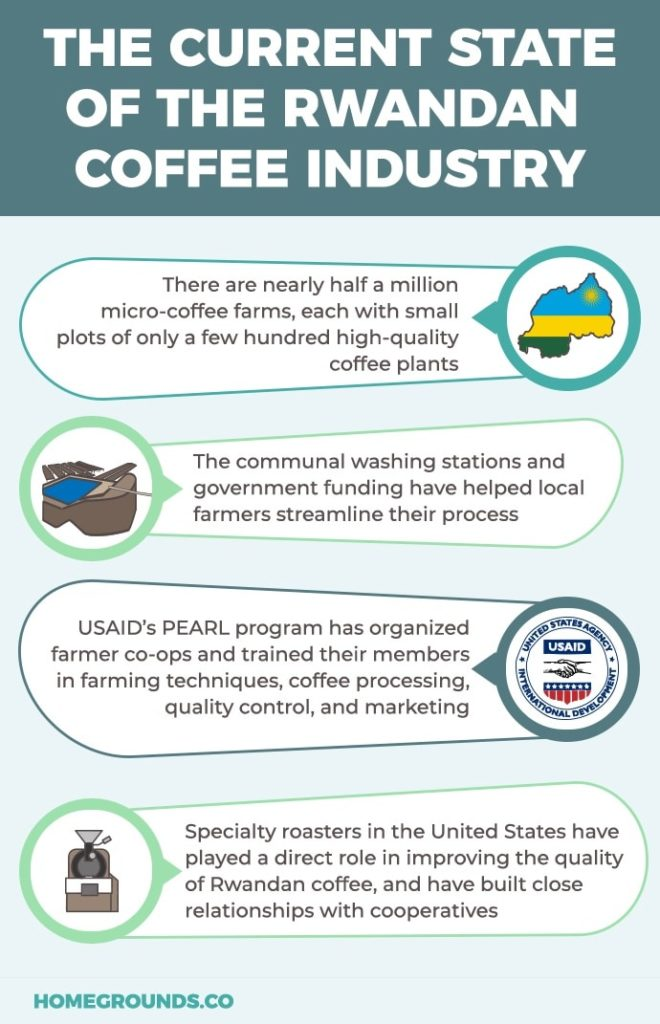In the modern workplace, workplace caregiving challenges have emerged as a critical issue affecting millions of employees. Balancing work and caregiving responsibilities at work has become increasingly difficult, with many workers facing the dual demands of their jobs and the need to care for children, elderly parents, or sick spouses. With over 50 percent of the workforce reporting caregiving obligations, the lack of employer support for caregivers, such as flexible work schedules and adequate resources, often leads to significant work-life balance issues. These challenges not only impact individual workers but also contribute to higher employee turnover rates, directly affecting companies’ bottom lines. As organizations rethink their approaches, recognizing the importance of supporting caregiving responsibilities is essential for fostering a productive and inclusive workplace.
The current landscape of professional life is witnessing an upswing in the struggles related to caring for family members while maintaining employment. Many professionals are caught in the bind of juggling their work commitments alongside various caregiving roles, whether that involves tending to young children, supporting aging parents, or looking after a partner with health issues. This growing demographic of caregivers, often referred to as the ‘sandwich generation,’ faces unique obstacles that traditional work structures simply do not accommodate. As awareness increases around these caregiving challenges, organizations are incentivized to consider flexible working arrangements and enhanced policies, ultimately aiming to improve employee retention and satisfaction. By creating a supportive environment for all employees, businesses can better navigate the complexities of workforce dynamics in today’s society.
Understanding Caregiving Responsibilities at Work
Caregiving responsibilities at work have become increasingly complex, particularly as millions of workers juggle the demands of their jobs with personal obligations like caring for children, aging parents, or ill family members. This dual pressure creates significant stress, leading to increased absenteeism and lower productivity levels. Employers need to understand that accommodating employees who have caregiving roles is not just beneficial for the individual but essential for the overall health of the organization. By fostering an environment that supports those with caregiving responsibilities, businesses can enhance employee satisfaction and retention.
The definition of caregiving can vary widely, encompassing a spectrum of scenarios ranging from traditional parent-child dynamics to more complicated situations involving multiple generations. For instance, the ‘sandwich generation’ refers to those workers who balance the needs of both children and elderly relatives, illustrating the diverse and profound challenges faced by caregivers. As such, customized policies that reflect a deep understanding of these unique caregiving responsibilities can help address work-life balance issues, enabling employers to forge stronger relationships with their workforce.
Employer Support for Caregivers
Employer support for caregivers is crucial because it acknowledges the reality that most employees will face caregiving responsibilities at some point in their lives. By providing clear policies that facilitate flexible work schedules and understanding of family obligations, organizations can foster an inclusive workplace culture. For instance, offering paid family leave or fostering a telecommuting option can greatly relieve the pressures faced by working caregivers, leading to greater job satisfaction and loyalty to the company.
Moreover, when employers actively support their caregivers, they reduce the risk of turnover and absenteeism. Employees are more likely to stay with an organization that offers them the flexibility to manage their caregiving responsibilities effectively. This support not only benefits the employees but also translates to significant cost savings for employers as they retain experienced workers, minimizing the high costs associated with recruitment and training of new staff.
The Impact of Flexible Work Schedules
Flexible work schedules have emerged as a vital strategy for improving the work-life balance of employees, particularly those with caregiving obligations. By allowing employees to access adjustable schedules, companies can help alleviate the stress that often accompanies caregiving scenarios. This flexibility can mean the difference between an employee being able to fulfill their duties at home while maintaining their productivity at work.
Implementing flexible work arrangements not only aids in retaining valuable talent but also enhances overall productivity. Employees who feel supported in their caregiving roles are less likely to experience burnout, leading to higher job satisfaction and greater engagement. Businesses that adopt flexible scheduling practices often find themselves better positioned in competitive labor markets, as such arrangements attract a broader pool of applicants, including those who require more room for personal responsibilities.
Employee Retention and Caregiving
The relationship between employee retention and caregiving support is increasingly recognized in today’s workplace landscape. Millions of employees leave their jobs each year due to their inability to balance work demands with personal caregiving responsibilities. Companies that fail to acknowledge this correlation risk losing valued employees and the wealth of knowledge they bring, particularly in higher-paying roles where turnover is starkly detrimental.
Retention strategies that address caregiving needs can significantly impact an organization’s bottom line. Implementing programs such as employee assistance programs (EAPs) and support groups for caregivers can create a stronger sense of community and enhance the employment experience. Additionally, providing resources and training for managers on the challenges faced by caregivers can equip them to better support their teams, ultimately leading to a productive and committed workforce.
Addressing Work-Life Balance Issues
Work-life balance issues have taken center stage in discussions about employee well-being and productivity. More than just a buzzword, achieving a true balance is crucial to employee satisfaction and retention, particularly for those who are caregivers. Companies that invest in initiatives supporting work-life balance, such as wellness programs and family leave policies, demonstrate a commitment to their staff’s quality of life.
Moreover, by openly addressing work-life balance issues, employers cultivate an environment of transparency and trust. Employees are more likely to engage in open conversations about their needs when they recognize that their employers understand and value their personal lives. This transparency can lead to fewer instances of presenteeism, where employees are physically present but mentally distracted due to personal responsibilities, ultimately fostering a more productive workplace.
The Costs of Ignoring Caregiving Challenges
Ignoring the caregiving challenges faced by employees has significant hidden costs for organizations. Companies often underestimate the financial implications of failing to accommodate employees who are juggling family responsibilities. This oversight leads to high turnover rates and diminished employee morale, both of which can incur costs that ripple throughout the organization.
Further, when employees leave due to unaddressed caregiving needs, employers lose not only institutional knowledge but also a wealth of potential contributions that experienced workers provide. The costs associated with recruiting and training new employees, as well as the potential for drops in productivity during transitions, highlight the importance of creating supportive policies that address caregiving issues. Recognizing and acting on these challenges can ultimately lead to a healthier, more engaged, and efficient workforce.
Strategies for Employers to Support Caregivers
Employers should develop targeted strategies to support caregivers in their workforce. This includes reviewing hiring practices to eliminate biases against candidates with caregiving gaps in their resumes and implementing training programs that sensitize managers to the unique difficulties faced by employees balancing work and caregiving duties. By adopting such measures, companies can broaden their talent pool and create a workplace environment that actively champions inclusivity.
Furthermore, fostering open discussions around caregiver challenges can create a culture where employees feel seen and supported. Employers can conduct regular surveys to gauge employee well-being regarding caregiving roles, utilizing this feedback to continuously improve policies. These strategies not only help cultivate employee loyalty but also directly contribute to a more resilient organizational culture.
Fostering a Culture of Understanding
Creating a culture of understanding within the workplace is essential for managing caregiving challenges effectively. This can involve promoting awareness among staff about the varied responsibilities their colleagues may face outside of work. Community-building activities, such as workshops or lunch-and-learn sessions focused on caregiving topics, can facilitate this conversation, helping to foster empathy and collaboration among employees.
When employers foster a culture that prioritizes understanding and support for caregivers, they are more likely to see improved employee morale and productivity. Workers will be more inclined to seek help for their caregiving struggles rather than feeling isolated or uncertain, leading to better work outcomes and less absenteeism. Establishing this culture contributes not only to the employees’ happiness but also positions the organization as an industry leader in employee support.
Impact of Caregiving on Productivity
The impact of caregiving on productivity is profound and multifaceted. Employees juggling caregiving responsibilities often face absenteeism, where they may miss work due to family obligations, or presenteeism, where they are physically present but unable to perform at their best. This dual burden can hinder overall workplace efficiency and drive down team morale as responsibilities are shared unevenly.
To mitigate the productivity loss associated with caregiving challenges, organizations must engage with their workforce to develop solutions that recognize these dynamics. Implementing flexible work arrangements or introducing wellness programs that address caregiving stress can help alleviate the undue burden placed on caregivers. By championing productivity through supportive measures, employers can create an environment that values both personal and professional commitments.
Revising Hiring Processes for Caregivers
Revising hiring processes is crucial for attracting and retaining caregivers who possess valuable skills and experiences. Traditional applicant tracking systems often penalize candidates with gaps in their employment due to caregiving responsibilities, leading to a loss of potential talent. Employers should consider adjusting these criteria to focus more on the individual’s skills, experiences, and overall potential rather than merely assessing their continuous employment history.
Additionally, companies can bolster their outreach by collaborating with caregiver support organizations or tapping into job boards focused on flexible work opportunities. By broadening their hiring criteria to welcome caregivers back into the workforce, employers not only fill essential roles but build a culture of inclusivity that acknowledges and respects the caregiving journey.
Frequently Asked Questions
What are the most common workplace caregiving challenges faced by employees?
Many employees struggle with workplace caregiving challenges, including the need to balance job demands with personal responsibilities like caring for children, elderly parents, or spouses with chronic illnesses. These challenges are exacerbated by inflexible work schedules and a lack of employer support for caregivers, leading to absenteeism and decreased productivity.
How can employers provide better support for caregivers facing workplace challenges?
Employers can improve support for caregivers by offering flexible work schedules, understanding family obligations, and fostering open communication about caregiving responsibilities at work. Implementing family-friendly policies can significantly enhance employee retention and help workers manage their caregiving roles more effectively.
What role do flexible work schedules play in addressing workplace caregiving challenges?
Flexible work schedules play a crucial role in alleviating workplace caregiving challenges by allowing employees to adjust their hours based on their caregiving responsibilities. This flexibility helps employees maintain work-life balance and reduces the likelihood of absenteeism, ultimately benefiting both employees and employers.
How do work-life balance issues affect employee retention in caregiving situations?
Work-life balance issues are a significant factor affecting employee retention, particularly for those with caregiving responsibilities. When employees feel overwhelmed by their dual roles, they are more likely to leave the workforce. Addressing these issues through supportive company policies can improve retention rates and enhance overall workplace morale.
What strategies can organizations adopt to improve employee retention amidst caregiving responsibilities?
Organizations can adopt several strategies to improve employee retention amidst caregiving responsibilities, including developing flexible scheduling options, providing access to caregiver resources, promoting a culture of understanding around caregiving needs, and conducting regular employee feedback sessions to address concerns and improve support.
How do caregiving responsibilities impact employee productivity in the workplace?
Caregiving responsibilities can significantly impact employee productivity due to increased absenteeism and presenteeism, where employees are physically present but mentally distracted. Providing support and understanding from employers can help mitigate these effects and lead to better overall productivity.
What can be done to minimize the stigma around discussing caregiving responsibilities at work?
To minimize the stigma around discussing caregiving responsibilities at work, employers can foster an inclusive culture that encourages open conversations about caregiving challenges. Training managers to approach these discussions empathetically and integrating caregiving topics into performance reviews can promote a sense of community and support.
Why is understanding employee caregiving demographics critical for employers?
Understanding employee caregiving demographics is critical for employers as it helps identify the specific needs and challenges of their workforce. By recognizing these factors, companies can create targeted support strategies that enhance retention, productivity, and overall employee satisfaction.
How can exit interviews help employers understand workplace caregiving challenges?
Exit interviews can provide valuable insights into workplace caregiving challenges by revealing the motivations behind an employee’s departure. Asking questions related to caregiving can help employers identify systemic issues and develop policies that support employee retention and satisfaction.
What hidden costs do employers face due to caregiving-related turnover?
Employers face several hidden costs due to caregiving-related turnover, including the expenses associated with recruiting and training new employees. Loss of experienced staff can also lead to decreased productivity and disruption within teams, ultimately affecting the company’s bottom line.
| Key Point | Details |
|---|---|
| Caregiving Responsibilities | Millions of American workers, including various job roles, face significant caregiving responsibilities such as parenting, caring for sick spouses, or supporting elderly relatives. |
| Workplace Challenges | Rigid employer policies and unpredictable schedules contribute to workers’ struggles to balance jobs with caregiving duties. |
| Exit Reasons | Caregiving obligations are the leading reason employees leave the workforce, affecting both individual lives and company economics. |
| Hidden Workforce | There are 50 to 60 million caregivers in the U.S., often hesitating to seek flexible work arrangements due to fear of stigma. |
| Economic Impact | Employers incur substantial costs related to employee turnover, largely due to caregiver-related departures and lack of support. |
| Corporate Responsibility | Employers should acknowledge caregiving issues, adjust hiring processes, and create supportive policies to retain talent. |
Summary
Workplace caregiving challenges are increasingly critical as millions of employees balance job commitments with caregiving roles. Understanding and addressing these challenges can lead to improved employee retention and productivity, ultimately benefiting both workers and employers. By revisiting work policies, fostering communication about caregiving, and recognizing the needs of this hidden workforce, companies can create a more inclusive and supportive work environment.



